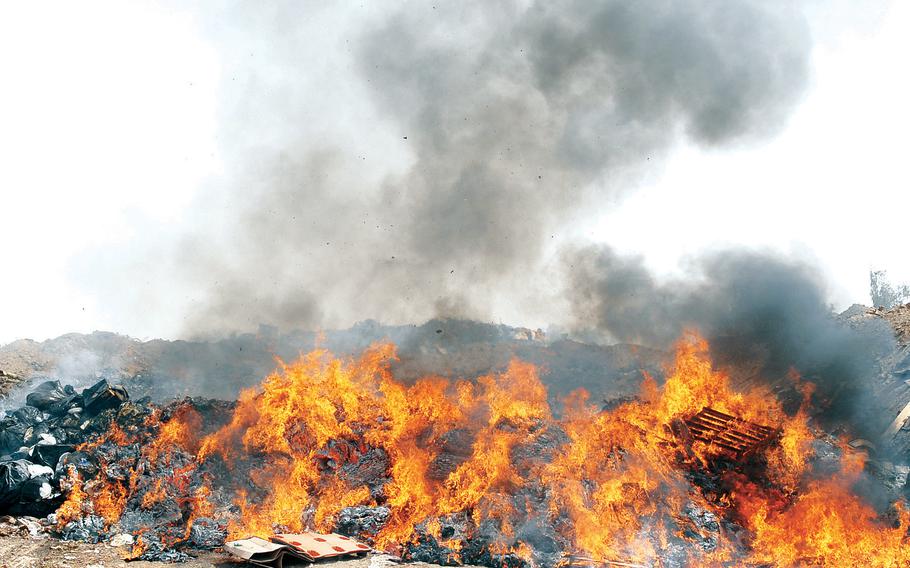
The burn pit at Balad Air Base, Iraq, in 2008. Long deployments to military bases with open-air burn pits put veterans of the wars in Iraq and Afghanistan at higher risk for certain respiratory ailments, according to new research that used recently declassified deployment data. (Stars and Stripes)
Prolonged deployments to bases with burn pits put veterans of the wars in Iraq and Afghanistan at slightly higher risk for certain respiratory ailments, according to new research that used recently declassified deployment data.
The study, published Thursday by JAMA Network Open looked at the records of 459,381 military veterans receiving health care from the Veterans Administration to determine the health effects of exposure to burn pits.
Longer deployment to military bases with open burn pits was associated with small increases in risk of asthma, chronic obstructive pulmonary disease and hypertension, said the report, authored by a collection of researchers from numerous universities.
The study “is an important milestone in conducting research on health outcomes associated with exposures occurring during military service,” the researchers said.
While the associations were modest in magnitude, several million veterans could be affected by the findings, the report said.
For years, many in the military community have believed that burn pits, which were commonplace at scores of combat outposts in Iraq and Afghanistan, put the health of troops in danger.
But for a long time, Defense Department and Department of Veterans Affairs officials denied any connection between illness and burn pits.
The situation remained a hot button issue in Washington, where for years hearings have been held on what should be done to better care for veterans with ailments believed to have stemmed from burn pit exposure.
A big turning point came in 2022, when Congress passed a law that expanded health care and disability benefits for millions of veterans exposed to toxic burn pits during their careers.
But to date, research on the long-term health consequences of exposure to open burn pits has been limited despite public concern, the JAMA study said.
While deployments to Afghanistan and Iraq have been associated with a higher risk of respiratory disease, a research challenge has been determining whether exposure to something other than burn pits could account for the ailments, the study said.
To carry out a more precise analysis required a large sample of veterans and the ability to isolate any burn pit exposure from other environmental hazards during a deployment.
The researchers were able to do that by reconstructing veterans’ histories of deployment to bases with and without burn pits, using recently declassified military deployment records and VA health data.
The study is perhaps the most extensive look at long-term health outcomes associated with burn pit exposures, given that it considers a much larger number of veterans than past reviews, researchers said.